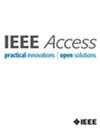An Optimization Model for Harmonic Parameters Estimation of Transmission Lines Using Phasor Measurements
IF 3.4
3区 计算机科学
Q2 COMPUTER SCIENCE, INFORMATION SYSTEMS
引用次数: 0
Abstract
Transmission line parameter estimation is a critical issue for power system operation and planning studies. With the advent of synchrophasor technology, numerous new methods have been developed using PMUs (Phasor Measurement Units) based on real-time measurements from the sending and receiving ends of a transmission line. Typically, the equivalent PI section of the line is determined for the fundamental frequency only. For other harmonic orders, impedances can be measured at specific points in the electric network using a frequency scan approach. However, few studies have focused on the separate estimation of all longitudinal resistances, reactances and shunt admittances for higher harmonic orders. This paper presents a novel approach to this long-standing issue by formulating an optimization problem, where the least squares equation is minimized, subject to inequality constraints associated with the harmonic impedances of a transmission line, modeled with a quadrupole representation. The proposed optimization method allows for the estimation of line impedance parameters with reduced errors for all harmonic orders considered in the analysis. Computational simulations are carried out to demonstrate the applicability of the method, using different line models including a real Brazilian transmission line, and the impact of instrument transformers on the estimated results is also assessed.基于相量测量的输电线路谐波参数估计优化模型
输电线路参数估计是电力系统运行规划研究中的一个关键问题。随着同步相量技术的出现,基于传输线路发送端和接收端实时测量的pmu(相量测量单元)已经开发了许多新的方法。通常,线路的等效PI部分仅为基频确定。对于其他谐波阶,可以使用频率扫描方法在电网的特定点测量阻抗。然而,很少有研究集中在高次谐波的所有纵向电阻、电抗和分流导纳的单独估计上。本文提出了一种新的方法来解决这个长期存在的问题,通过制定一个优化问题,其中最小二乘方程被最小化,受到与传输线谐波阻抗相关的不等式约束,用四极表示建模。所提出的优化方法允许对分析中考虑的所有谐波阶进行误差较小的线阻抗参数估计。采用不同的线路模型,包括一条真实的巴西输电线路,进行了计算模拟,以证明该方法的适用性,并评估了仪表变压器对估计结果的影响。
本文章由计算机程序翻译,如有差异,请以英文原文为准。
求助全文
约1分钟内获得全文
求助全文
来源期刊

IEEE Access
COMPUTER SCIENCE, INFORMATION SYSTEMSENGIN-ENGINEERING, ELECTRICAL & ELECTRONIC
CiteScore
9.80
自引率
7.70%
发文量
6673
审稿时长
6 weeks
期刊介绍:
IEEE Access® is a multidisciplinary, open access (OA), applications-oriented, all-electronic archival journal that continuously presents the results of original research or development across all of IEEE''s fields of interest.
IEEE Access will publish articles that are of high interest to readers, original, technically correct, and clearly presented. Supported by author publication charges (APC), its hallmarks are a rapid peer review and publication process with open access to all readers. Unlike IEEE''s traditional Transactions or Journals, reviews are "binary", in that reviewers will either Accept or Reject an article in the form it is submitted in order to achieve rapid turnaround. Especially encouraged are submissions on:
Multidisciplinary topics, or applications-oriented articles and negative results that do not fit within the scope of IEEE''s traditional journals.
Practical articles discussing new experiments or measurement techniques, interesting solutions to engineering.
Development of new or improved fabrication or manufacturing techniques.
Reviews or survey articles of new or evolving fields oriented to assist others in understanding the new area.
 求助内容:
求助内容: 应助结果提醒方式:
应助结果提醒方式:


